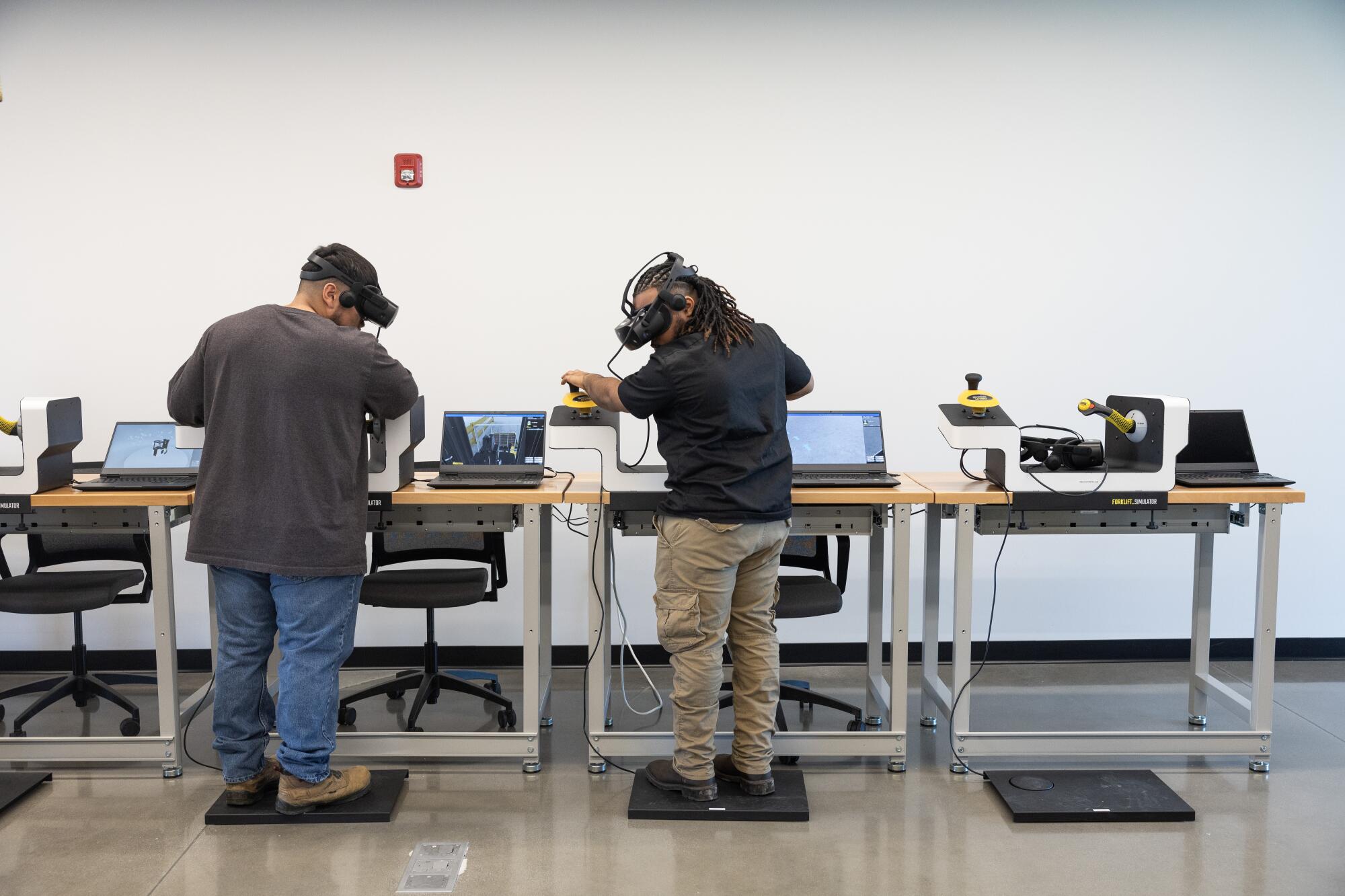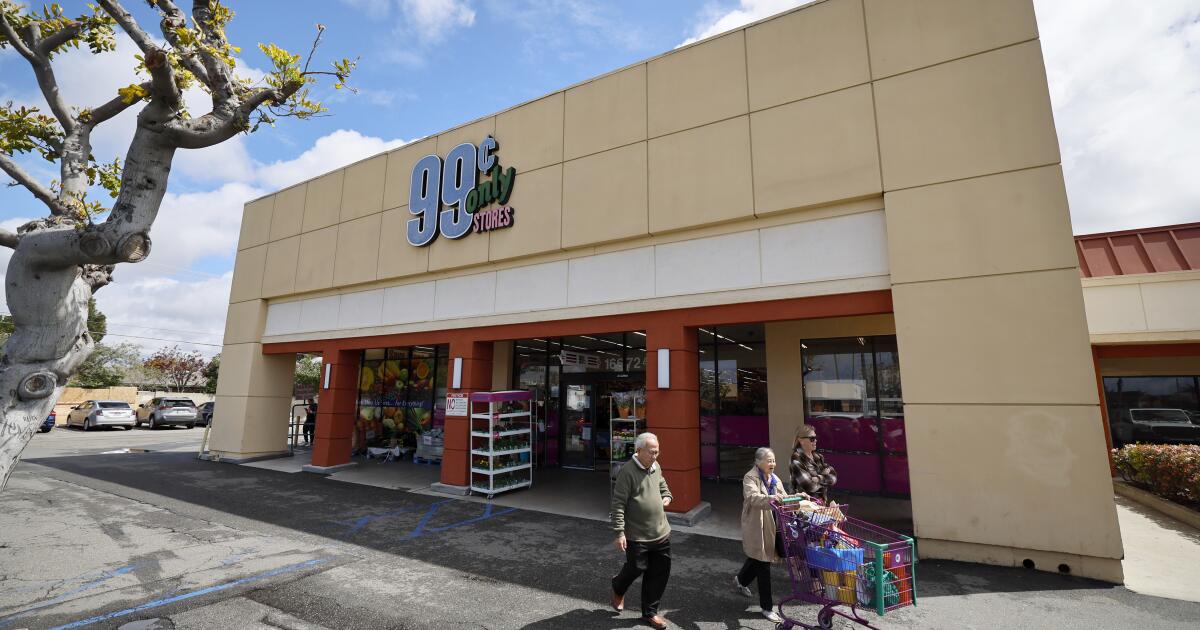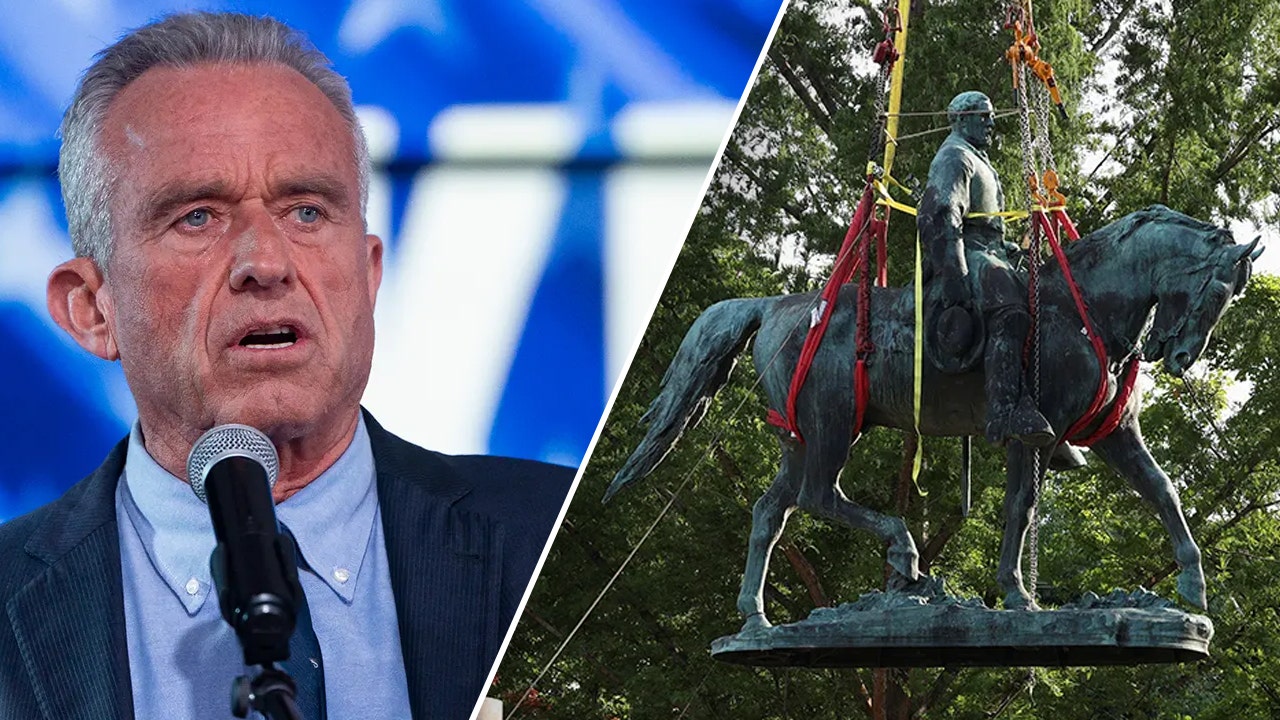Business
California's wealthiest farm family plans mega-warehouse complex that would reshape Kern economy

California’s wealthiest farming family is proposing an expansion of industrial warehousing in Kern County that would fundamentally reshape the economy in the southern San Joaquin Valley.
Outside of Kern, Stewart and Lynda Resnick, the billionaire owners of the Wonderful Co., are better known for pomegranates and pistachios. But for more than a decade, they have also owned a master-planned industrial park in the city of Shafter, northwest of Bakersfield, that is home to distribution centers for Fortune 500 companies like Target, Amazon and Walmart.
Now, looking to capitalize on the seismic shift to online shopping, the Resnicks want to position Kern County as a new frontier for the industrial-scale warehousing that is key to connecting customers with their goods. Wonderful is pushing to more than double the size of its industrial park by converting 1,800 acres of its own almond groves into additional warehousing space.
And it’s pursuing costly infrastructure projects that company leaders say will mitigate the impacts of that expansion.
Wonderful says its vision for a scaled-up Wonderful Industrial Park is wholly different from the thousands of sprawling distribution centers that have swallowed up neighborhoods in California’s Inland Empire. The influx of mega-warehouses in Riverside and San Bernardino counties has generated thousands of jobs — but also relentless truck traffic and poor air quality that have given rise to a backlash.
Wonderful’s industrial park sits along railroad tracks on more than 1,600 acres of former farmland several miles outside the Shafter town center. With the exception of a cluster of homes on the other side of the tracks, the surrounding acreage is primarily agricultural. Wonderful describes the park as a job creator in a region hard hit by economic shifts in agriculture and oil.
Wonderful Co.’s plans for a mega-warehousing complex near Shafter include a new six-lane highway to ease traffic on State Route 43 (pictured) and other area roadways.
(Myung J. Chun / Los Angeles Times)
The company is working with local officials on plans for a new highway that would route trucks away from central Shafter. It also plans to funnel at least $120 million into an inland rail terminal, expected to be completed next spring. The goal is to move more products from coastal ports by rail to Shafter, reducing traffic on State Route 99, already one of the busiest truck routes in California.
If all goes according to plan, Shafter would be transformed from a small town, population 20,162, into an international trade hub; and Kern County — a region that long has prized what’s extracted from the ground — would become ground zero for the growing global goods movement.
Many Shafter residents say the opportunity for steady, relatively well-paying work in areas other than farming and oil would come as a welcome addition. But some are concerned that doubling-down on an industry that will bring more truck and train travel to one of the nation’s most polluted corridors can’t help but have negative consequences.
“I understand that company says it will bring jobs; this is true to some extent,” said Gustavo Aguirre, assistant director of the Delano-based Center on Race, Poverty & the Environment. “But it is also true that it’s going to bring health and environmental impacts that are going to impact the neighbors who live near the industrial park.”
The way John Guinn tells it, the Wonderful Industrial Park was created out of necessity.
Several decades ago, as big-box retailers moved into San Joaquin Valley towns, Main Street shoe shops and dry goods stores struggled to survive. Town officials were looking to create employment opportunities.
“The world was changing,” said Guinn, who worked as city manager in Shafter for 17 years. “We had to find a way to do something different.”
So Shafter rezoned a portion of land between Highway 99 and Interstate 5, along the BNSF rail line, and that became the industrial park. The first tenant was Target, which built a warehouse of roughly 2 million square feet in 2003.
In 2011, the Resnicks’ real estate arm bought the development. Guinn retired from the city in 2014 and joined Wonderful as executive vice president and chief operating officer for the real estate team. It’s a role, he said, that will allow him to bring his broader vision for Shafter to light.
Today, the Wonderful Industrial Park typically builds and leases million-square-foot warehouses. Just over half of the 1,625 acres already zoned for industrial buildings have been developed.
It’s proved a profitable form of diversification for Wonderful — which also owns Fiji Water and Justin Vineyards — at a time when almond prices are falling and water supplies are tight.
According to Wonderful, the industrial park has generated about 10,000 jobs, including warehouse employees, truck drivers and services handling shipping logistics. With the planned expansion, company leaders said, the complex eventually could support 50,000 jobs.

Warehouses are quickly becoming more mechanized, meaning more robotics and less need for people. “Warehouses are both job creators and job destroyers,” says UC Riverside’s Ellen Reese.
(Myung J. Chun / Los Angeles Times)
Marco Avendaño, 27, has worked for nearly a year as a forklift operator for CJ Logistics in the industrial park. Avendaño, who didn’t go to college, said he’s learned new skills and now finds himself interested in pursuing a management role with the company.
“Even though it just started as a job for me, it made me get a career mindset,” he said.
His schedule — 9:30 p.m. to 6 a.m. — works well for him and his fiancee, a librarian, who are raising three children. By his working nights, he said, “we still grow that bond with our family.”
Avendaño previously held two other jobs in the industrial park — at a manufacturing plant that has closed and for a contractor at the Walmart warehouse. In his current job, he said he’s received several raises and is making $22.69 an hour — “more than I’ve ever made hourly.”
As the park expands, the number of jobs created with each warehouse is likely to slow. Warehouses are quickly becoming more mechanized, meaning more robotics and less need for people. The advancements in technology could stymie Wonderful’s job projections.
“Warehouses are both job creators and job destroyers,” said Ellen Reese, co-director of the Inland Empire Labor & Community Center at UC Riverside. She noted that automation is reducing the number of warehouse employees, but not necessarily making jobs safer.
“A lot of the research actually suggests that more automated warehouses have higher injury rates than less automated warehouses,” she said.
Guinn acknowledged that more efficient warehouses will require less labor. But the remaining jobs, he said, will be more technically skilled and require higher pay.
Inside Walmart’s warehouse, for example, an automated system builds pallets tailored to the needs of individual stores more quickly and accurately than a team of humans could. The facility employs just 400 people across all shifts, many of whom are highly skilled equipment operators trained to troubleshoot technical problems. The average salary is between $28 and $29 an hour.
“I don’t think it’s bad if we’re able to do twice as much with half as much labor,” Guinn said. “What I think is bad is to have a whole lot of folks that don’t have a job, or have jobs that aren’t very good.”
Wonderful says it’s helping ease the transition with an on-site career center that trains workers for the higher-skilled jobs.

Two men take part in an apprenticeship program at the Wonderful Career Center in Shafter, using VR headsets that simulate forklift operations.
(Myung J. Chun / Los Angeles Times)
On a March morning, Luis Chapa wore virtual reality goggles inside a classroom at the career center and simulated driving a stand-up forklift. He’s training as a maintenance technician and earning on-the-job experience and college credits through a free year-long program.
Before enrolling in the apprenticeship program, Chapa, 37, worked for two and a half years in Bakersfield’s oil industry. The work on a demolition crew was strenuous and dirty, and Chapa, a father of two, said his pay stalled at $26 an hour.
He decided to make a career change and is confident the training will lead to a better-paid position with Wonderful or another company at the industrial park.
“My cap-off in the oil fields would pretty much be my starting point where I’m heading,” said Chapa.
Along with their farming empire, Stewart and Lynda Resnick are known for their philanthropy, which includes major gifts for climate research, as well as money for scholarships and wellness centers in the valley towns where many of their workers live. So Wonderful is acutely aware of the optics as the company positions the park for a much bigger footprint.
Guinn and others maintain that, with the right planning, the expansion doesn’t have to mirror the trade-offs in the Inland Empire.
The company envisions building the Wonderful Pacific Terminal at the industrial park, so that trains can ferry cargo from California ports directly to the facility. Once built, Guinn estimates that 20% of imported containers could arrive by rail, with each train replacing the equivalent of 240 trucks.

The Wonderful Company, co-owned by billionaires Stewart and Lynda Resnick, says expanding its industrial park in Shafter will generate new jobs in a region shaken by economic shifts in oil and agriculture.
(Myung J. Chun / Los Angeles Times)
Wonderful is also touting plans for a six-lane highway, the Central Valley Green Pass, that would act as a relief valve for Highway 99.
Both projects are still in the planning phase and in need of multiple approvals.
As another carrot, Wonderful has agreed to create a fund for the local park district if Shafter officials approve the company’s rezoning application. New warehouse tenants would pay 2 cents per square foot per month — or $240,000 annually for a million-square-foot warehouse — into a fund dedicated to enhancing sports programs, arts and crafts and community events.
Aguirre, with the Center on Race, Poverty & the Environment, is helping negotiate a broader community benefits agreement intended to ensure the people who live in and near Shafter get more than jobs out of the deal.
“The residents recognize that [this project] could bring jobs, but they come with a price,” Aguirre said. “Because of this, they say, ‘What are you going to do for our community?’”

Business
Dozens of shuttered 99 Cents Only stores could reopen under a familiar name: Dollar Tree

Dozens of recently closed 99 Cents Only stores across the Southland could reopen with another bargain retailer’s logo outside: Dollar Tree.
The Chesapeake, Va.-based company, which operates hundreds of Dollar Tree and Family Dollar stores in California, reportedly made a bid on about 100 recently shuttered locations of 99 Cents Only, which announced last month that it was going out of business, according to a LinkedIn post from Bill Read, executive vice president of the real estate firm Retail Specialists.
The development, first reported by the Orange County Register, involves a handful of stores in Arizona, Nevada and Texas, but the vast majority are in Southern California, including in Lancaster, North Hollywood, Burbank, Long Beach and Riverside, according to Read’s post.
Dollar Tree did not immediately respond to requests for comment. A representative for 99 Cents Only could not be reached.
The 99 Cents Only chain — a longtime icon of L.A.’s discount retail world — started in 1982 with a single store on La Tijera Boulevard and expanded rapidly.
Before the City of Commerce company abruptly announced its closure in April — citing several factors, including shifting consumer demands and inflation — the chain had 371 locations.
But shelves quickly emptied out during liquidation sales, and several of the locations today are covered in graffiti.
Dollar Tree has faced financial turmoil of its own.
In 2014, Dollar Tree Inc. announced a plan to buy its big rival Family Dollar Stores Inc. for more than $8 billion — an acquisition that, according to the company’s website, brought its total to 15,000 stores. But this year, Dollar Tree announced a plan to close nearly 1,000 locations, including about 600 Family Dollar stores, in the first half of 2024, as well as several other Dollar Tree stores in the years ahead.
The Associated Press contributed to this report.
Business
OpenAI forms safety and security committee as concerns mount about AI

ChatGPT creator OpenAI on Tuesday said it formed a safety and security committee to evaluate the company’s processes and safeguards as concerns mount over the use of rapidly developing artificial intelligence technology.
The committee is expected to take 90 days to finish its evaluation. After that, it will present the company’s full board with recommendations on critical safety and security decisions for OpenAI projects and operations, the firm said in a blog post.
The announcement comes after two high-level leaders, co-founder Ilya Sutskever and fellow executive Jan Leike, resigned from the company. Their departures raised concerns about the company’s priorities, because both had been focused on the importance of ensuring a safe future for humanity amid the rise of AI.
Sutskever and Leike led OpenAI’s so-called superalignment team, which was meant to create systems to curb the tech’s longterm risks. The group was tasked with “scientific and technical breakthroughs to steer and control AI systems much smarter than us.” Upon his departure, Leike said OpenAI’s “safety culture and processes have taken a backseat to shiny products.”
OpenAI’s new safety and security committee is led by board chair Bret Taylor, directors Adam D’Angelo and Nicole Seligman and Chief Executive Sam Altman. Multiple OpenAI technical and policy leaders are on the committee as well. OpenAI said that it will “retain and consult with other safety, security and technical experts to support this work.”
The committee’s formation arrives as the company begins work on training what it calls its “next frontier model” for artificial intelligence.
“While we are proud to build and release models that are industry-leading on both capabilities and safety, we welcome a robust debate at this important moment,” OpenAI said in its blog post.
Controversies about use of AI have dogged the San Francisco-based company, including in the entertainment business, which is worried about the technology’s implications for intellectual property and the potential displacement of jobs.
Actor Scarlett Johansson criticized the company last week over its handling of a ChatGPT voice feature that she and others said sounded eerily like her. Johansson, who voiced an AI program in the Oscar-winning Spike Jonze movie “Her,” said she was approached by Altman with a request to provide her voice, but she declined, only to later hear what sounded like her voice in an OpenAI demo.
OpenAI said that the voice featured in the demo was not Johansson’s, but another actor’s. After Johansson raised the alarm, OpenAI put a pause on its voice option, “Sky,” one of many human voices available on the app. An OpenAI spokesperson said the formation of the safety committee was not related to the issues involving Johansson.
OpenAI is best known for ChatGPT and Sora, a text to video tool that has major potential ramifications for filmmakers and studios.
OpenAI and other tech companies have been holding discussions with Hollywood, as the entertainment industry grapples with the long-term effects of AI on employment and creativity.
Some film and TV directors have said AI allows them to think more boldly, testing ideas without having the constraints of limited visual effects and travel budgets. Others worry that increased efficiency through AI tools could whittle away jobs in areas like makeup, production and animation.
As it faced safety questions, OpenAI’s business, which is backed by Microsoft, also must deal with competition from other companies that are building their own artificial intelligence tools and funding.
San Francisco-based Anthropic has received billions of dollars from Amazon and Google. On Sunday, xAI, which is led by Elon Musk, announced it closed on a $6-billion funding round that goes toward research and development, building its infrastructure and bringing its first products to market.
Business
California is making restaurants tell the truth about prices. Will it give you sticker shock?

California restaurants finally have their answer: They, too, must comply with a new state law that bans unadvertised fees, surcharges and other costs tacked onto the end of the bill.
Starting July 1, restaurants will join thousands of other California businesses, including event ticket sellers, short-term rental apps, hotels and food delivery services, that are required to include all mandatory fees and charges in the prices they display or advertise.
The state attorney general’s office gave conflicting statements in the weeks after Gov. Gavin Newsom signed the measure into law last year, telling some news outlets that restaurants could continue to keep their current prices while listing any surcharges on their menus, and others that the surcharges had to be included in the prices themselves.
On Wednesday Atty. Gen. Rob Bonta’s office released a set of guidelines to clarify that issue and answer other questions about how businesses must comply with the new law. Bonta sponsored the measure, Senate Bill 478, along with its co-authors, state Sens. Bill Dodd (D-Napa) and Nancy Skinner (D-Berkeley).
For restaurants, that means it will no longer be enough to just list service charges and surcharges on a bill or a menu’s fine print. Instead, these charges must be included in the prices printed on the menu.
For example, a $20 mole enchilada at a restaurant that levies a 5% fee to cover employee health costs will have to be listed on the menu as a $21 mole enchilada. And a flier advertising a $10 lunch buffet at a restaurant that adds a mandatory 10% “service charge” will have to refer to the offer as an $11 lunch buffet.
In a statement, the Golden Gate Restaurant Assn. said Bonta’s guidelines “will create significant challenges for the restaurant industry moving forward.”
The association, which advocates for the restaurant industry, argues that by prohibiting the longtime practice of using service charges to increase staff pay or cover the cost of local ordinances — such as San Francisco’s requirement that businesses spend at least a minimum amount on healthcare services — the law will compound the problems faced by an already struggling industry.
“Diners will not pay less, instead they will see significant menu price increases, which we believe will further cause them to pull back on dining out,” the statement said. “Not only will restaurants struggle, but workers will lose hours and jobs.”
With few exceptions, businesses of all sorts across California will not be able to advertise, display or offer a price for their goods or services that does not include all of the “mandatory fees or charges” other than government-imposed taxes or fees or reasonable shipping costs, according to the measure’s authors.
“Put simply, the price a Californian sees should be the price they pay,” Bonta’s office said in a news release.
The new law doesn’t dictate what companies charge for their goods or services. Businesses will still be able to set prices, but the posted price will need to match the full amount a customer will see on their final bill.
Though businesses can exclude taxes and shipping charges, handling fees must be included. In other words, actual postage or delivery charges can be excluded, while the cost of pulling an item off a shelf and taking it to a shipping company has to be included in its advertised price.
Separate fees for optional services or features do not need to be advertised. This could extend to a bevy of industries and services — for example, the amount an airline charges for a seat upgrade or checked bags.
What about late fees or extra charges for customers who smoke in a hotel room? Because those charges can be avoided, they do not have to be advertised, according to the guidelines from Bonta’s office.
Businesses will not be allowed to skirt the law by advertising one price and then letting customers know that additional fees might be added later. A business can, however, list the full price of its product and provide customers a breakdown of all the fees that are included.
Bonta also offered some guidance for businesses that say they do not know up front what the final cost will be once their work is done. Such businesses “should wait to display a price until they know how much they will charge,” the guidelines say.
This could affect how live music fans interact with ticket sellers for concerts and other live events. The nonprofit watchdog Consumer Reports noted that hidden fees can increase the price of live-event tickets by 30% to 40%.
Live Nation Entertainment, parent company of ticketing giant Ticketmaster, said in a statement that it supported SB 478 and has already offered all-in pricing at some venues and festivals across the country. “Unfortunately, we routinely see resellers defy state laws requiring all-in pricing which confuses and harms fans, so we strongly encourage regulatory scrutiny to ensure compliance across the industry,” the company said.
The Virginia-based Travel Technology Assn., a global network of online travel agents, said it views transparency as a top priority but opposed SB 478 and would rather see a uniform national standard for regulations on lodging prices.
“We take this position to create uniformity and certainty for lodging operators, travel technology companies, and most of all, travelers, who will have a better understanding of what is included in advertised prices for trips both in and out of their home state,” President and Chief Executive Laura Chadwick said in a statement.
The online travel company Expedia opposed the bill for similar reasons.
In response to the argument, Bonta said that California does not need to wait for federal action to ensure transparency for consumers. The practice of hiding mandatory charges, he said in a statement, “is deceptive and unfair to consumers wherever it occurs — not just in certain industries.”
-

 Movie Reviews1 week ago
Movie Reviews1 week ago‘The Substance’ Review: An Excellent Demi Moore Helps Sustain Coralie Fargeat’s Stylish but Redundant Body Horror
-

 Movie Reviews1 week ago
Movie Reviews1 week ago‘Rumours’ Review: Cate Blanchett and Alicia Vikander Play Clueless World Leaders in Guy Maddin’s Very Funny, Truly Silly Dark Comedy
-

 Culture1 week ago
Culture1 week agoFrom Dairy Daddies to Trash Pandas: How branding creates fans for lower-league baseball teams
-

 News1 week ago
News1 week agoVideo: A Student Protester Facing Disciplinary Action Has ‘No Regrets’
-

 Movie Reviews1 week ago
Movie Reviews1 week ago‘Blue Sun Palace’ Review: An Intimate, Affecting and Dogma-Free Portrait of Chinese Immigrants in Working-Class New York
-

 World1 week ago
World1 week agoPanic in Bishkek: Why were Pakistani students attacked in Kyrgyzstan?
-

 Politics1 week ago
Politics1 week agoAnti-Israel agitators interrupt Blinken Senate testimony, hauled out by Capitol police
-

 Politics1 week ago
Politics1 week agoMichael Cohen swore he had nothing derogatory on Trump, his ex-lawyer says – another lie – as testimony ends
















